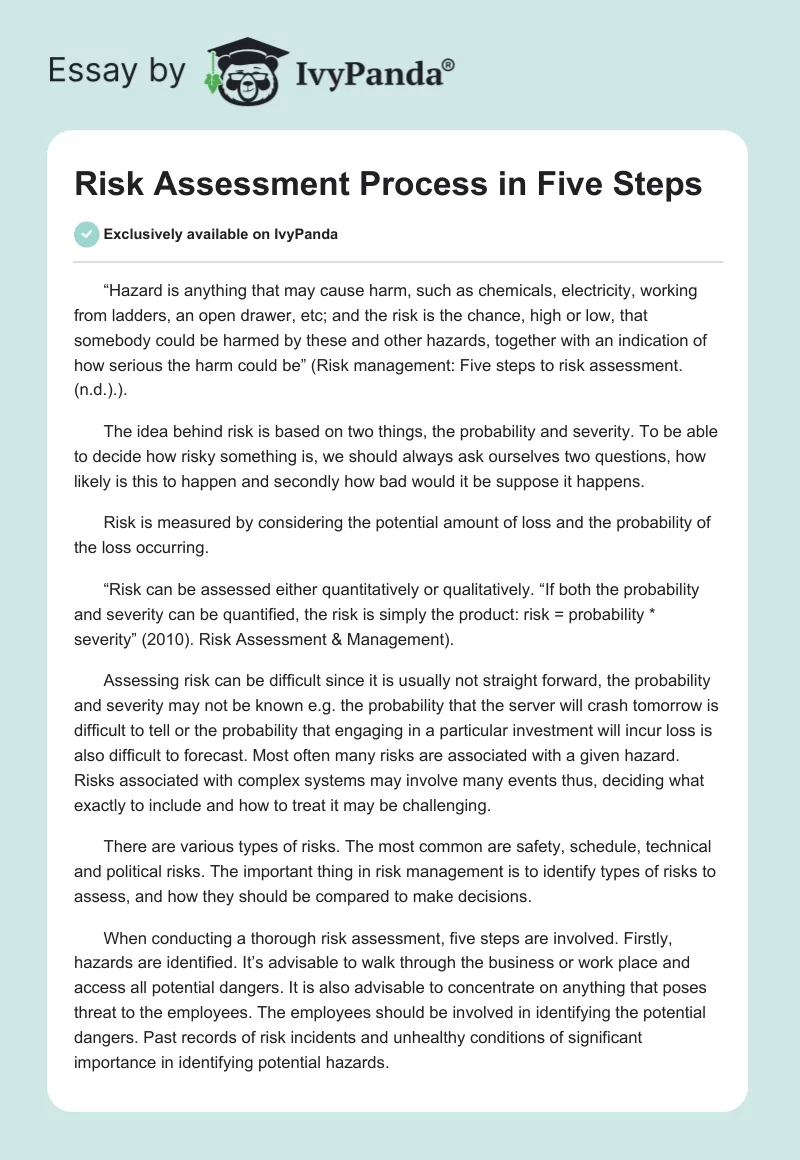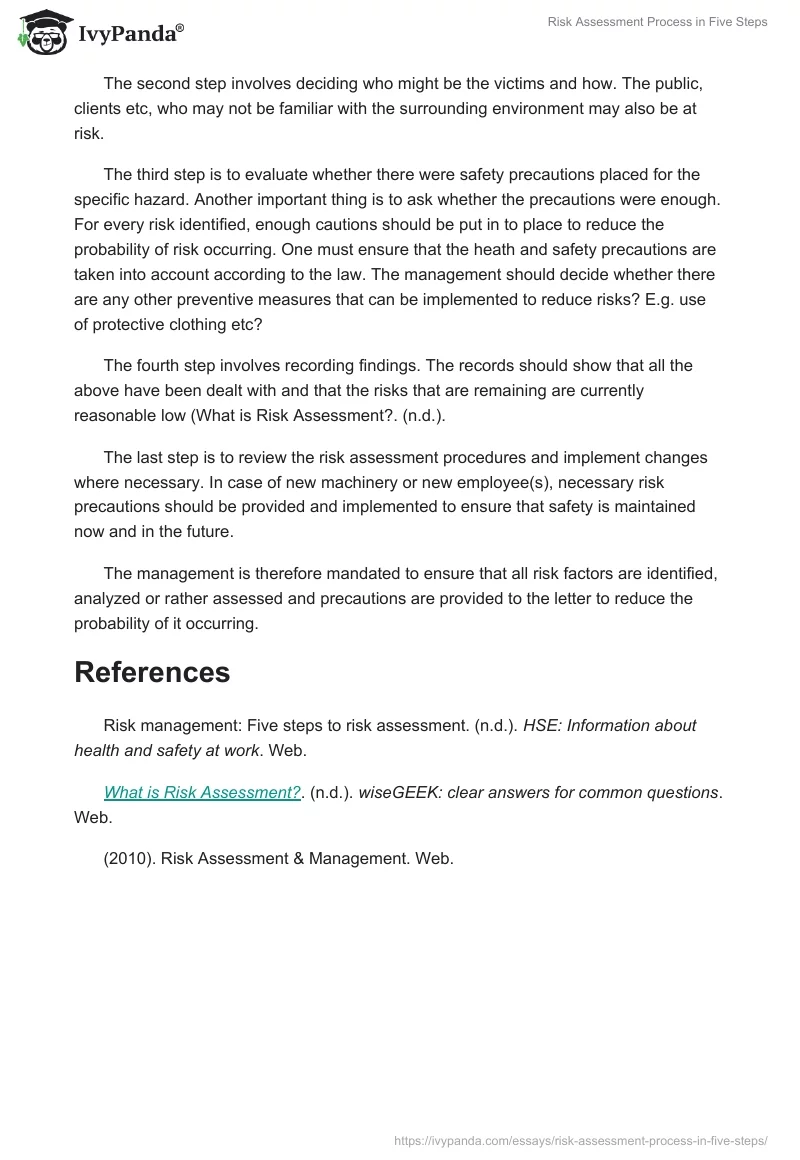“Hazard is anything that may cause harm, such as chemicals, electricity, working from ladders, an open drawer, etc; and the risk is the chance, high or low, that somebody could be harmed by these and other hazards, together with an indication of how serious the harm could be” (Risk management: Five steps to risk assessment. (n.d.).).
The idea behind risk is based on two things, the probability and severity. To be able to decide how risky something is, we should always ask ourselves two questions, how likely is this to happen and secondly how bad would it be suppose it happens.
Risk is measured by considering the potential amount of loss and the probability of the loss occurring.
“Risk can be assessed either quantitatively or qualitatively. “If both the probability and severity can be quantified, the risk is simply the product: risk = probability * severity” (2010). Risk Assessment & Management).
Assessing risk can be difficult since it is usually not straight forward, the probability and severity may not be known e.g. the probability that the server will crash tomorrow is difficult to tell or the probability that engaging in a particular investment will incur loss is also difficult to forecast. Most often many risks are associated with a given hazard. Risks associated with complex systems may involve many events thus, deciding what exactly to include and how to treat it may be challenging.
There are various types of risks. The most common are safety, schedule, technical and political risks. The important thing in risk management is to identify types of risks to assess, and how they should be compared to make decisions.
When conducting a thorough risk assessment, five steps are involved. Firstly, hazards are identified. It’s advisable to walk through the business or work place and access all potential dangers. It is also advisable to concentrate on anything that poses threat to the employees. The employees should be involved in identifying the potential dangers. Past records of risk incidents and unhealthy conditions of significant importance in identifying potential hazards.
The second step involves deciding who might be the victims and how. The public, clients etc, who may not be familiar with the surrounding environment may also be at risk.
The third step is to evaluate whether there were safety precautions placed for the specific hazard. Another important thing is to ask whether the precautions were enough. For every risk identified, enough cautions should be put in to place to reduce the probability of risk occurring. One must ensure that the heath and safety precautions are taken into account according to the law. The management should decide whether there are any other preventive measures that can be implemented to reduce risks? E.g. use of protective clothing etc?
The fourth step involves recording findings. The records should show that all the above have been dealt with and that the risks that are remaining are currently reasonable low (What is Risk Assessment?. (n.d.).
The last step is to review the risk assessment procedures and implement changes where necessary. In case of new machinery or new employee(s), necessary risk precautions should be provided and implemented to ensure that safety is maintained now and in the future.
The management is therefore mandated to ensure that all risk factors are identified, analyzed or rather assessed and precautions are provided to the letter to reduce the probability of it occurring.
References
Risk management: Five steps to risk assessment. (n.d.). HSE: Information about health and safety at work. Web.
What is Risk Assessment?. (n.d.). wiseGEEK: clear answers for common questions. Web.
(2010). Risk Assessment & Management. Web.


